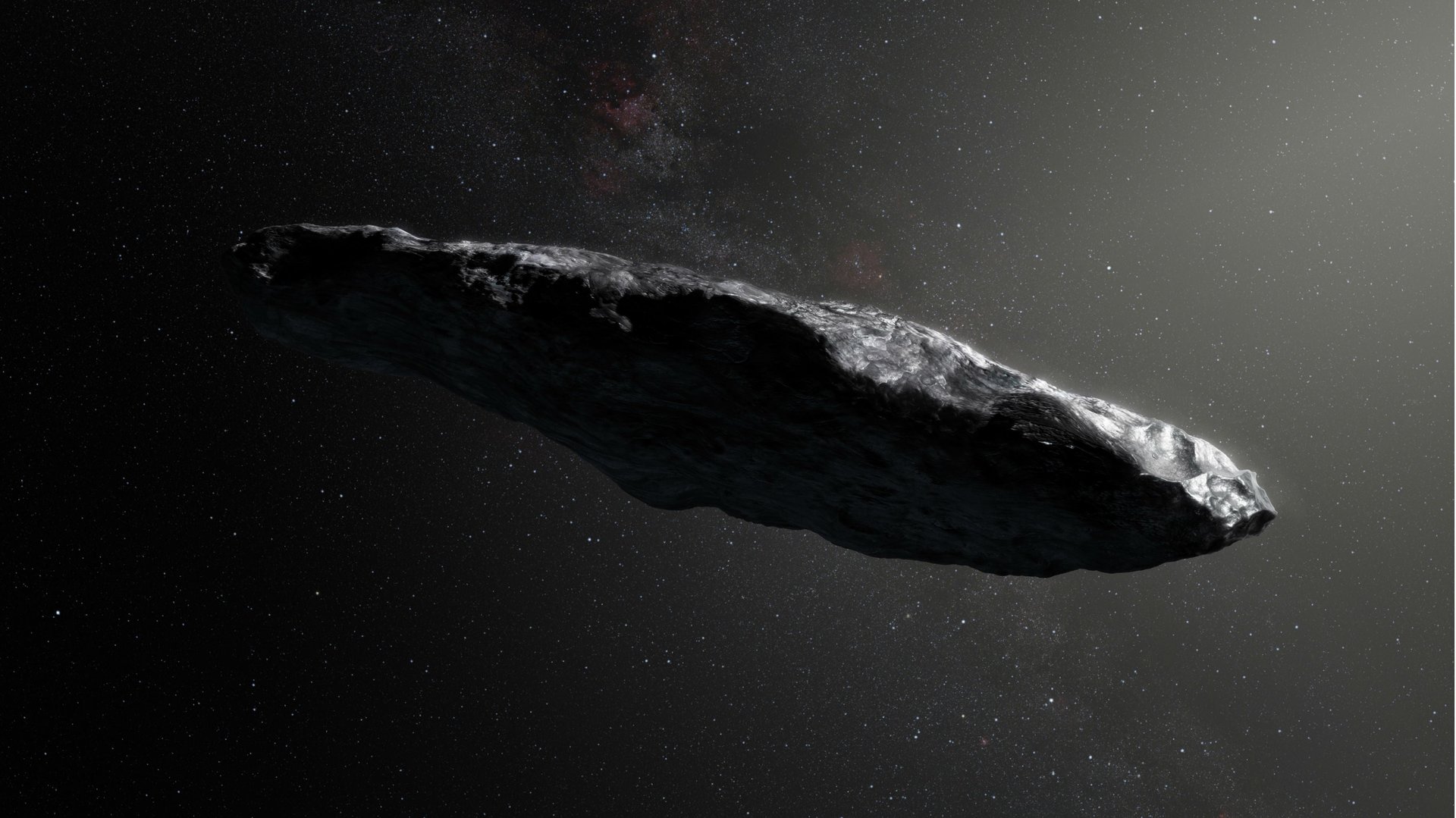The first interstellar object to fly by Earth looked like a giant, pink space cigar
In space currency, asteroids are a dime a dozen. Astronomers have found around 750,000 of the giant space rocks floating around our solar system.


In space currency, asteroids are a dime a dozen. Astronomers have found around 750,000 of the giant space rocks floating around our solar system.
But when researchers using the the Pan-STARRS1 telescope in Hawaii first spotted the asteroid then called 1I/2017 U1 whizzing past Earth in September, they quickly realized there was something unique about this particular flying hunk of space junk. After trying to calculate its orbit based on projections derived for objects in our solar system, the researchers found that it wasn’t following any of them. That suggested it was actually from some deep corner of the universe instead. In fact, this turned out to be the first-ever documented interstellar asteroid to fly by Earth.
Because the object was flying away from the sun back into deep space at a fast clip—a cool 64,000 kilometers per hour (40,000 mph)—they flagged astronomers over in Arizona and the European Space Agency in Germany to take a quick look and double-check their calculations and confirm that its orbit wasn’t following anything else in our solar system. Then took a more detailed look at the asteroid with the Very Large Telescope in the Atacama desert in Chile before it whizzed away entirely.
Putting the pieces of these observation together, astronomers concluded that the asteroid is like nothing they’ve ever seen before. They published (paywall) their findings on Nov. 20 in a letter to the journal Nature.
1I/2017 U1 seems to be made of either really dense rock or unreactive metal. It’s a strangely stretched-out, oblong shape, like a 400-meter (1300-foot) space cigar. It’s also pink, likely from years of getting bombarded with cosmic radiation as it wanders, untethered to a group of planets gravitationally chained to a star, throughout the universe.
The researchers think this initial discovery means there are probably way more interstellar objects floating around our solar system than we thought before—upwards of 10,000, each of which can provide clues about how how solar systems, including our own, form planets, ABC reports. They think this asteroid, and presumably others like it, may have been formed as our own solar system gave birth to the planets beyond the asteroid belt (Jupiter, Saturn, Uranus, and Neptune), by spitting out huge chunks of metal and other dense rock.
Already, the International Astronomical Union has responded to the news with a new classification system for these intergalactic asteroids, and given 1I/2017 U1 a better name: ‘Oumuamua, Hawaiian for “messenger from afar arriving first.”